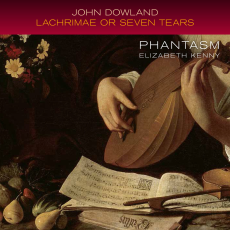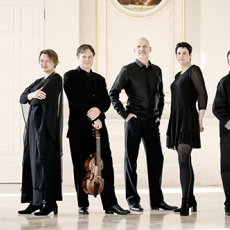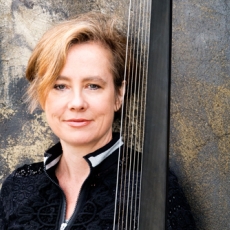Phantasm - Dowland: Lachrimae - MusicWeb International
For many people this will be self-recommending: possibly the first great instrumental work by an English composer, performed by the premier viol ensemble of our day with the support of a notable lutenist. All I really need say is that this disc lives up to expectations. However, for those who don't yet know the work or the performers it is worth saying something about both.
Dowland had an eventful life, in which a constant feature was his failure to get a position at the court of Elizabeth I. He thought this was because he was a Catholic, but then so were Tallis and Byrd, who did have court positions. More probably, it was because he had a difficult personality, emotional, touchy, irritated by criticism and with a tendency to melancholy. This was not just the melancholy which was partly a fashion at the time - think of Hamlet - but serious mood-swings. Anyway, disappointed in England he went to Denmark where he was successful and moved between the two countries for some years. Eventually, long after Elizabeth's death, he obtained a court position with James I but thereafter seems to have given up composing.
His lute songs were popular at the time and have become so again. His instrumental masterpiece is Lachrimae (more properly lacrimae, tears) which begins with a set of pavans, each named after a different kind of tears, followed by fourteen other dances, which include pavans, galliards and almands. He prefixed to the whole work a Latin motto 'Aut Furit, aut Lachrimat, quem non Fortuna beavit' (He whom Fortune has not blessed either rages or weeps). Pavans and almands were slow and in duple time, while galliards were fast and in triple time. They are scored for viol consort with a lute, a combination which had been used by Lassus. The whole set runs to just under an hour so fits neatly onto a CD.
What is immediately striking about this work is that it is both beautiful and easy to follow. As Laurence Dreyfus points out in his perceptive sleeve-note, 'one gains an experiential knowledge of a coherent journey where depth and grasp are valued over coverage and breadth.' There is a tear motif which begins each of the Lachrimae pavans but a good deal of harmonic variety. The dances which follow are both grave and gay, often drawing on Dowland's earlier lute songs, and the whole makes up a most attractive hour of listening.
Music of this kind was written partly for the pleasure of the players, who could well be cultivated amateurs, and also for small and aristocratic audiences. The particular skill of Phantasm, apart from their mastery of viols, which are slower to speak than instruments of the violin family, and have their own, more reticent character, is that they have brought the skills of playing more recent chamber music to their viol repertory. They articulate, present and project the music skilfully but unobtrusively so that it seems entirely natural. They bring out the character of each piece, so there is a good deal of variety and always they make a most attractive sound.
The lutenist Elizabeth Kenny is familiar with the idiom, having recorded a recital of Dowland's lute songs with Mark Padmore and collaborated with Phantasm successfully in their recording of William Lawes' The Royal Consort. Her plucked strings contrast well with Phantasm's bowed ones, a single voice contrasting with an ensemble.
There are many other versions of this work, as well as others which offer only the seven opening pavans along with other works. I had two to hand, rather old but still available. The 1992 Rose Consort version pairs the seven named Lachrimae pavans with seven associated lute songs, which makes for an attractive and varied programme. They are enthusiastic but less subtle than Phantasm. Fretwork's version of 1989-90 (Erato Veritas 5450052) like Phantasm offers the whole collection, though in a different sequence. Their plainer style also has a lot to be said for it. Jordi Savall was greatly interested in English Renaissance music at one stage; his 1987 version was well received.
The recording - I listened on ordinary two channel stereo - is warm but intimate. There are excellent essays in the booklet by Laurence Dreyfus and Elizabeth Kenny and biographies of all the performers. I could wish that they had printed them black on white instead of reversed out, but apart from this the presentation is exemplary.
This lovely recording deserves every success.


